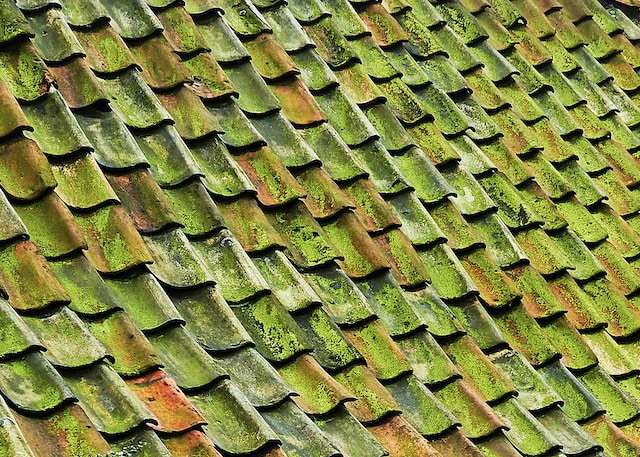A car is often many people’s prized possession – and rightfully so; it’s a social status symbol and a valuable asset, besides being an essential means of transport that gets you from point A to point B in utmost comfort. Taking good care of it is part of the deal in ensuring its top condition, and thorough cleaning is at the centre of it all.
In addition to the regular washing up and wiping to remove dust and dirt, you’re going to have to go a little deeper than this to preserve the pristine factory look, a task requiring you to resort to detailing a couple of times a year. It’s an activity that can do more for your car and driving than you imagine, if we consider there’s a direct influence on the increase of your overall safety and comfort too.
There’s no denying it takes more effort and time to get it done than it does with regular cleaning, as well as a certain investment in specialised car exterior care supplies, but the results you get in the end make it all worthwhile. Sure, you could always leave it in the hands of pro detailers, however there’s some fun and contentment in knowing you did it all yourself.
How is Detailing Done?

To be able to be your car’s detailer, it’s really simple: you first have to have the adequate products for the job, and then follow the right steps using the said products properly. So, let’s look into what these essentials are, and then consider the step-by-step process.
Assembling the Exterior Car Cleaning Kit
Cleaning Supplies
Same as with regular cleaning, this is where you want to acquire all the general-purpose car exterior care basics such as microfibre cloths and drying towels for the overall washing up. If you want something that’s more of an upgrade than your good old sponges, there are convenient mitts you can wear that make for easy and swirl-free results.
Moving on, you’re also going to have to invest in a bucket, or two, for the washing and rinsing parts. A general-purpose cleaning and a pre-wash solution are great for dust and grime on the car’s surface, however for thorough clean-up of certain parts, such as tyres, windows, mirrors, and headlights, then it’s recommended to get the specialised car exterior care products that are made for those specific parts.
A bird-dropping remover is another must to be able to prevent those annoying bird droppings that can easily turn into a more serious problem than just an aesthetic nuisance with time, leading to paint issues, or worse, corrosion. Last but not least, don’t forget the brushes in varying shapes, sizes, and softness levels as they come in handy for those hard-to-reach areas.
Preparing Supplies
When assembling your car exterior care products collection, you can’t overlook the importance of dealing with stubborn stains with suitable paint claying and polishing supplies. You’re going to need bug, tar, and glue remover, iron fallout remover for the brake pads, clay bars and clay mitts to smooth out any rough paintwork spots, and water spot remover for a cleaner surface to be able to move on to the polishing. That’s essential for getting rid of scrapes and swirls.
In case there aren’t any, then a general-purpose polish product would do. While you get the best results with a polishing machine, it’s advisable to avoid it if you don’t have experience working with one as it can be an aggressive approach that could lead to unwanted results when you don’t know what you’re doing. In that aspect, it would be best to rely on manual application.
Protecting Supplies

Whether you’re planning on adding a nice finish, or a protective coating, this is the job for fillers, waxes and sealants. To be able to apply them properly, you’re going to need some pads or a microfibre cloth. If there’s already some sealing or waxing work done, a quick detailer can provide short-term gloss. A nice tyre dresser is another necessary item to give your tyres sealing and gloss too.
Doing the Detailing Work
Okay, so you’ve assembled all the best car cleaning products for exterior detailing and now it’s time to do the actual detailing work. Where to begin?
Wheel Prep
Well, first and foremost, it’s nice to start off with the very parts that most get in direct contact with dirt, and those would be the tyres. It’s helpful to do a pre-soak here at this beginning stage to remove the unwanted road debris and let the specialised wheel cleaner do its thing by applying it and letting it sit for a few minutes before rinsing. The at home car detailing tools you can rely on here are brushes for hard-to-reach spots, microfibre cloth for the wash-up and drying towels for the drying.
Pre-wash
What sets regular washing from thorough detailing is the pre-wash foam you apply with a pressure washer and lance. A thick lather of this very product helps eliminate any particles that have become ingrained and give your paintwork a dirty look. It’s especially useful for those areas that are often overlooked yet collect a lot of stains and grime, such as the side mirrors, grille, and the surrounding of the number plates. A pre-cleaner is another useful product at this point, after which you can rinse thoroughly and get that nice fresh wash look.
Shampooing

This isn’t a step done with your regular home cleaning products, but rather a specialised shampoo designed for cars that’s gentle on the paint yet successful at removing the grime. This is where you get to choose from glossy or matte finish product result, and to get either you’re going to have to apply using mitts. You should be as thorough as possible going from the top of the car to the bottom, not leaving out any area.
Getting Rid of the Harsh Stains
In this step, you need to remove the common contaminants that could be present to be able to move on with the polishing, sealing and/or waxing. At this step, you get to use the specialised car deep cleaning products for asphalt stains and bird droppings. It’s a crucial step that can protect your car’s paintwork and prevent corrosion issues later on.
Polishing
If there are any swirls and scratches, this is where polishing comes in. Depending on how serious they are, you’re going to be using either the medium-cut polish for the general surface damage, or the heavy-cut abrasive one for the deep scratches. The final one is the finer polish used right before the sealing and waxing to prepare the paintwork.
Sealing and Waxing
Whether you want to apply them with the help of pads or a machine, the truth is these are products you don’t want to skip on because of how great they are at filling in dents and scratches, as much as adding a layer of protection from the weather elements and chemicals.
Adding The Finishing Touches
You can’t overlook the windows, mirrors, or headlights, so this is the final step to focus on. Specialised glass and headlight cleaners are the go-to products here, using a microfibre cloth.







